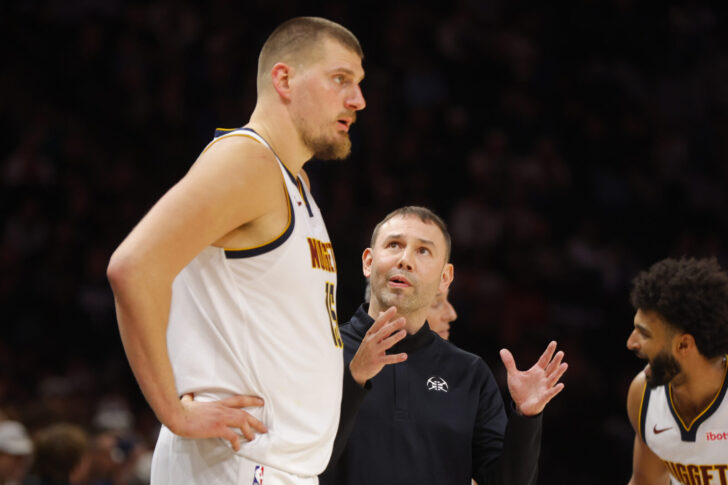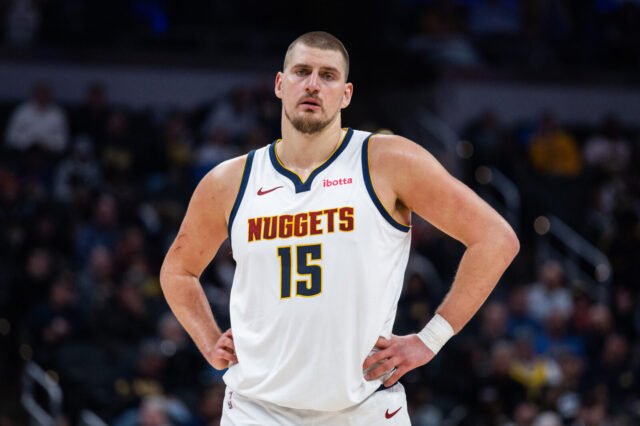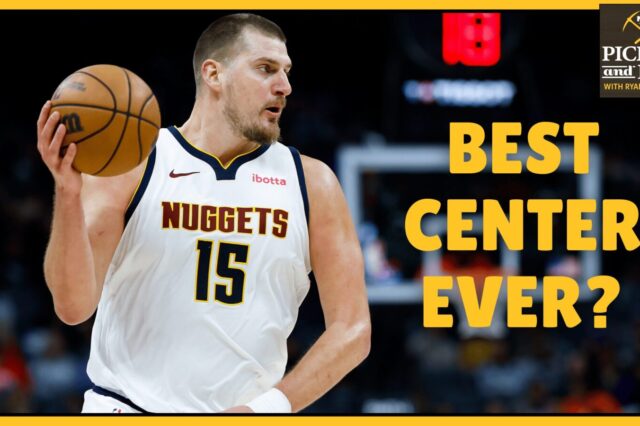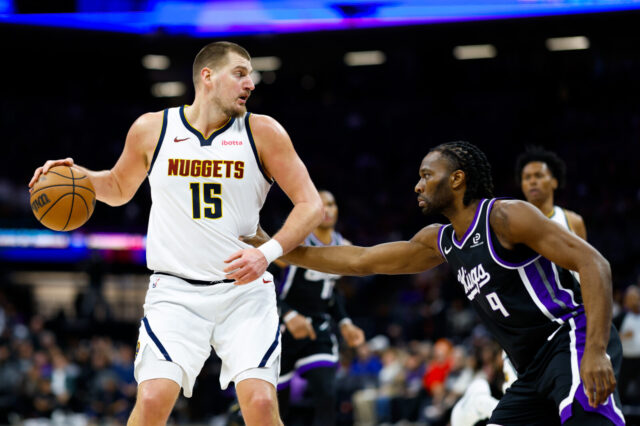Who could’ve ever imagined?
The Denver Nuggets, a team that was lucky to get bona fide contributions from anyone outside of its starting five for the past two seasons, is now 10 deep. Last season, the plus-minus statistic on any given night was telling; anytime any rotation that resembled a “second string” was in the game, any lead Denver held was as good as gone.
There was of course, the behind-the-scenes (sort of) feud between the coach and general manager. Regardless of whether Calvin Booth was in the wrong – he’d bought a bag full of bad, bad groceries – or if Michael Malone was to blame – he refused cook with the ingredients in the cupboard – the Nuggets were a mess. Beyond the starting five, the Nuggets were an utter disaster.
Amazingly, and thanks to a should-have-been MVP effort from Nikola Jokic, the Nuggets were still good. They finished 1.5 games out of the conference lead, earning the 5th seed in the playoffs. They took eventual champ OKC to the brink, losing in game 7 of the second round.
Had Denver’s starting five not been so bruised, battered and just plain exhausted, who knows what might have been possible.
Well, this season, it appears we might find out what is possible.
These Nuggets are deep. Very deep.
The Nuggets are so deep, in fact, there’s no need for Jamal Murray or Nikola Jokic to “platoon” with four other members of the second unit. That was the case last season, as Malone couldn’t trust any lineup that didn’t feature one of his two stars. This season, those two can play cards on the bench while David Adelman’s 6-10 do their thing. For all intents and purposes, the Nuggets have nine players capable of, with a history of, starting. Tim Hardaway Jr., Jonas Valančiūnas, Bruce Brown and Peyton Watson – all of whom come off the bench for Denver – have been or could be starters in the NBA. From there, the bench drops off a bit, but remember, players like Jalen Pickett, Zeke Nnaji and Julian Strawther all played significant minutes (and roles) on last year’s ultra-thin roster. Throw in DaRon Holmes, who was supposed to provide depth last year as a rookie before tearing his Achilles, and there are four more players that can reasonably give Adelman minutes.
The plus-minus stat can be controversial, but there is value in it at times. Assessing the Nuggets 6-9 is one of those times. Through three games, the cumulative plus-minus from Hardaway Jr., Valančiūnas, Brown and Watson is a whopping plus-72. Hardaway Jr. alone is a plus-40. Perhaps most impressively – and most encouraging – is the fact that in three games, amongst these four players, only once has one of them posted a minus number – in a blowout win against the Suns on Saturday night, Valančiūnas was somehow a minus-5. Other than that, though, none of those players in the first three games have posted a negative plus-minus.
That’s the good news. Great news, actually.
And the bad news?
Well, at 2-1 (easily could be 3-0), and getting massive contributions from a place they hadn’t since the 2022-23 championship run, there is no bad news.
That’s Adelman’s challenge though.
To say the first-(full)-year head coach has been handed the perfect roster would be unfair. No NBA roster is quite that. But to say he’s been given one that’s deep, one that can withstand the long grind of an NBA season (complete with injury potholes along the way) and win a title – that’s fair.
There are likely two major juggling acts the coach must perform given the depth and quality of his roster.
First, he’s got to keep a lot of players, who can justify playing a lot of minutes, happy. From first glance, it would appear that the type of players that make up the Nuggets roster are not selfish players – particularly 1-9. In fact, that’s likely the reason they’re all here. Aside from on court skills, these Nuggets are the right “type” of player, each understanding their role on what should be a championship roster. With that in mind, perhaps Adelman’s challenge on this front isn’t as big as it would be elsewhere.
Second, and probably more importantly, Adelman must resist the temptation to lean on his two big stars – three if you’d like to include Aaron Gordon – too much. Through three games, Jokic and Murray are averaging 36.3 minutes per game. Murray is looking like an All-Star, averaging 30.3 points per game, while Jokic has been his usual, ho-hum self, leading the league in both defensive rebounds and assists per game. Every season, there are nitpickers that claim Jokic looks slow, out of shape, disinterested, etc. – and then one day everyone looks up and realizes he’s posting another MVP worthy season. Both players provide a “trap” for Adelman.
Murray looks to be in the best shape of his career, or at least recently. Still, he’s got a history of being banged up in just about every season he’s played. Jokic, while a statistical machine, visibly ran out of gas in the postseason last year. Hardaway Jr. appears to be a very capable, very trustworthy answer for lightening Murray’s load, but Valančiūnas’ minutes have been a mixed bag when it comes to spelling the Joker. In three games, the Nuggets backup big has played a total of 35 minutes, which breaks down to 12:10, 12:45 and 10:18 respectively.
With the results being good so far – both in terms of the team’s record and individual contribution – there’s still not much to complain about. But in a perfect world, however, Valančiūnas should be playing a bit more – call it 15-17 minutes a night. While 3-5 minutes a game doesn’t seem like much, it could be the difference between a high-miles or “gently-used” Nikola Jokic come playoff time. The same goes for Murray; if Adelman can find a few more opportunities for his leading scorer to rest, he could be as dynamic as he was in the “Bubble.”
Nobody’s griping yet. But the Nuggets depth is worth watching, as it provides both hope and challenge in the Nuggets quest for a second Larry O’Brien.



